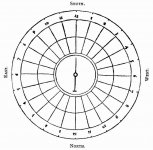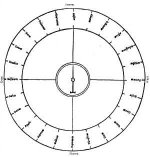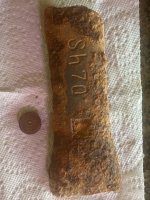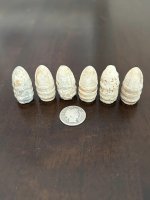goldguru
Sr. Member
- Aug 24, 2005
- 465
- 7
It's been a while since I've ventured onto T-net.
Seems most the old timer's have moved on from this world or are just no longer
present here for what ever reason.
been over 8 years myself since I've visited & I got thru reading Thoms 345 page post which I had participated in 2008.
I also realy enjoyed Sandy's walkthough.
That 1 & Twisted forks clock face post pic's along with Dsty's ramblings.
Sandy's final drawing made the light come on for me after reading a post by
Shortstack about the "De Re Metallica"
for those who have not read this it explains alot of whats missing & what most the old timers did not elaborate on.
seeing as there isn't much really happening anymore from Old Dog,Dsty & Desertmoons I thought i would put a faairly plain str8 forward view of how the
Bearing & distance markers work from the help posts I have read & watched other's ask questions about.
This is my perspctive on determining bearings & distances.
refer to many of Old Dog, Rangler,Dsty & others old post's for other hints.
So if I have it all wrong dont whine or complain I'm not interested
& likly neither is anyone else who reads it.
The whole idea is to maybe fill in some blanks were people are struggling with the WHY'S .
Seems most the old timer's have moved on from this world or are just no longer
present here for what ever reason.
been over 8 years myself since I've visited & I got thru reading Thoms 345 page post which I had participated in 2008.
I also realy enjoyed Sandy's walkthough.
That 1 & Twisted forks clock face post pic's along with Dsty's ramblings.
Sandy's final drawing made the light come on for me after reading a post by
Shortstack about the "De Re Metallica"
for those who have not read this it explains alot of whats missing & what most the old timers did not elaborate on.
seeing as there isn't much really happening anymore from Old Dog,Dsty & Desertmoons I thought i would put a faairly plain str8 forward view of how the
Bearing & distance markers work from the help posts I have read & watched other's ask questions about.
This is my perspctive on determining bearings & distances.
refer to many of Old Dog, Rangler,Dsty & others old post's for other hints.
So if I have it all wrong dont whine or complain I'm not interested
& likly neither is anyone else who reads it.
The whole idea is to maybe fill in some blanks were people are struggling with the WHY'S .







